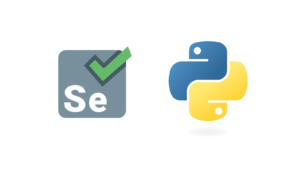As your test automation skills grow, it’s crucial to implement advanced strategies that enhance the efficiency, reliability, and maintainability of your tests. In this post, we’ll explore several techniques that can help you optimize your test automation framework using PyTest and Selenium.

- Custom Test Suites and Tags:
Organizing tests into custom suites and using tags can help you manage your tests better, especially as the number of test cases grows. This approach allows you to group tests based on their functionality or the features they cover, making it easier to run specific sets of tests as needed.Creating Custom Test Suites:
You can create custom test suites by organizing your tests in directories and using PyTest’s built-in capabilities to run them selectively. For example, you can create a directory structure like this:
bash /tests /smoke test_smoke.py /regression test_regression.py /features test_feature1.py You can then run tests from a specific suite by pointing to that directory: bash pytest tests/smoke
Using Tags to Selectively Run Tests:
You can also use markers in PyTest to tag your tests. This allows you to run only tests with specific tags, making it easier to focus on certain areas of your application.
Example of Tagging Tests:
import pytest @pytest.mark.smoke def test_login(): # Test logic here @pytest.mark.regression def test_data_processing():
Smoke Tests
To run only the smoke tests, you would use:
bash pytest -m smoke
This selective execution can save time and resources, especially when working with a large test suite.
- Data-Driven Testing:
Data-driven testing allows you to run the same test with multiple sets of data. This is particularly useful for testing forms, login scenarios, or any feature that requires varying input. You can use pytest.mark.parametrize to achieve this easily.Example of Data-Driven Testing:
import pytest from pages.login_page import LoginPage @pytest.mark.parametrize("username, password, expected", [ ("user1", "pass1", "Dashboard"), ("user2", "pass2", "Dashboard"), ("invalid_user", "wrong_pass", "Login Failed") ]) def test_login(setup_browser, username, password, expected): driver = setup_browser login_page = LoginPage(driver) login_page.enter_username(username) login_page.enter_password(password) login_page.click_login() if expected == "Dashboard": assert login_page.is_login_successful(), f"Login failed for {username}" else: assert login_page.is_login_failed(), f"Expected login failure for {username}"This approach allows you to easily manage multiple test cases while keeping your code clean.
- Parallel Test Execution
When you have a large suite of tests, running them sequentially can take a considerable amount of time. PyTest allows you to run tests in parallel using the pytest-xdist plugin, which can significantly reduce execution time.Installing pytest-xdist:
bash pip install pytest-xdist
Running Tests in Parallel:
You can run your tests in parallel by simply using the -n option followed by the number of CPU cores you want to utilize:
bash pytest -n 4
This command will execute your tests across four parallel processes, speeding up your testing process.
- Implementing Page Factory Pattern:
The Page Factory pattern is an enhancement of the Page Object Model that provides a way to initialize elements more efficiently. By using the PageFactory class, you can reduce boilerplate code and improve readability.Example of Page Factory Implementation:
from selenium.webdriver.support.page_factory import PageFactory class LoginPage: def __init__(self, driver): self.driver = driver self.username_field = PageFactory.init_elements(driver, "username") self.password_field = PageFactory.init_elements(driver, "password") self.login_button = PageFactory.init_elements(driver, "login")
This pattern can help manage elements more effectively, especially in larger applications.
- Custom Assertions and Helper Methods
Creating custom assertion methods can encapsulate common checks that you perform across multiple tests, promoting reusability and cleaner code. For example, you can create a base class for your tests that includes common assertions.Example of Custom Assertions:
class BaseTest: def assert_title_contains(self, driver, text): assert text in driver.title, f"Expected title to contain '{text}', but got '{driver.title}'" class TestLogin(BaseTest): def test_login_success(self, setup_browser): driver = setup_browser login_page = LoginPage(driver) login_page.enter_username("valid_user") login_page.enter_password("valid_password") login_page.click_login() self.assert_title_contains(driver, "Dashboard")This approach enhances readability and allows for more sophisticated assertions.
- Continuous Integration (CI) Integration:
Integrating your test automation suite with a CI tool (like Jenkins, Travis CI, or GitHub Actions) can automate your testing process. This ensures that tests are run automatically on every code change, providing immediate feedback to developers.
Basic CI Workflow:
- Push Code to Repository: When code is pushed to the repository, it triggers the CI pipeline.
- Run Tests: The CI tool executes your test suite using PyTest.
- Report Results: Test results are reported back to the developers, helping them identify issues quickly.
Conclusion
Implementing these advanced strategies in your PyTest and Selenium test automation framework can lead to significant improvements in efficiency, reliability, and maintainability. By utilizing custom test suites and tags, embracing data-driven testing, enabling parallel execution, applying the Page Factory pattern, creating custom assertions, and integrating with CI, you can build a robust testing framework that scales with your application.
As you refine your test automation practices, remember to keep exploring and adapting to new tools and techniques that can further enhance your workflow. Happy testing!

